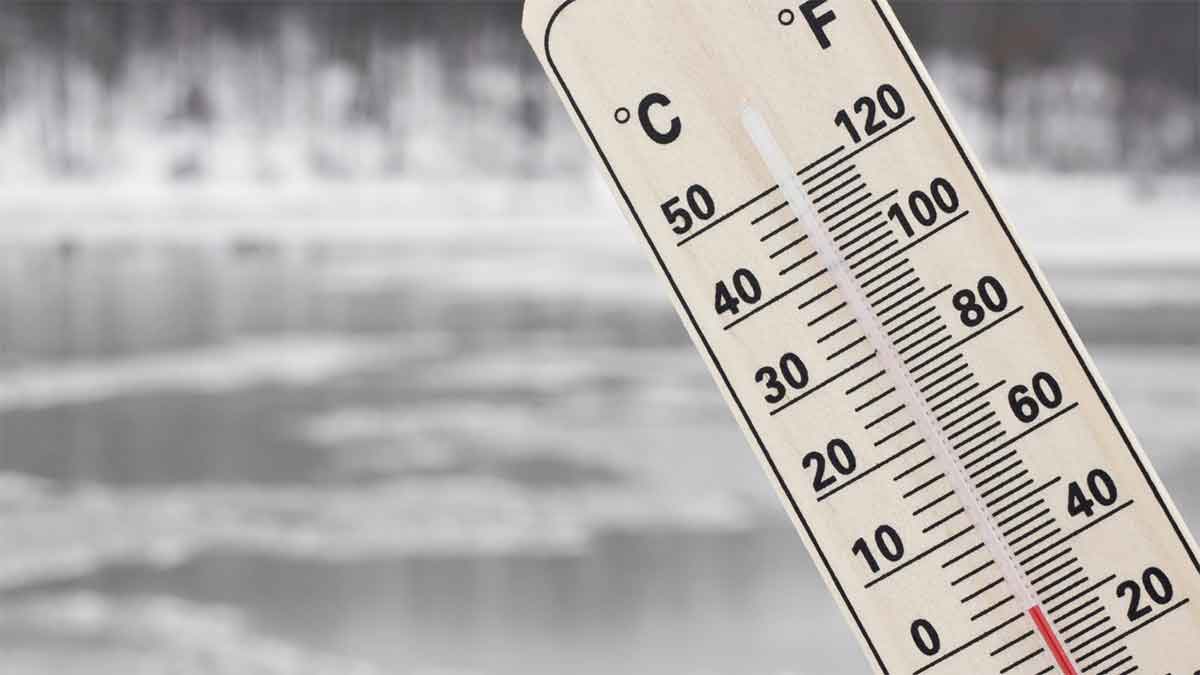Winter water damage can turn your home into a stressful, chaotic mess. From soaked carpets and soggy walls to potential mold growth and structural concerns, dealing with water damage in the middle of freezing temperatures is no easy feat. If you’re facing these issues, you’re likely wondering how to restore your home and prevent long-term damage.
This guide will provide a detailed, step-by-step approach to help you tackle winter water damage head-on. Whether you plan to do it yourself or opt for a comprehensive water damage restoration service, we’ll walk you through everything you need to know to restore your home to its original condition.
Step 1: Assess the Damage and Ensure Safety
Before beginning any restoration work, it’s essential to assess the extent of the damage and take the necessary precautions to ensure your and your family’s safety. Proper assessment sets the stage for effective water damage restoration, allowing you to identify and prioritize problem areas.
Identifying Areas Affected by Winter Water Damage
Winter water damage often goes beyond visible areas, making it crucial to inspect your home’s interior and exterior parts carefully. Begin by walking through each room and noting signs of water intrusion. Look for discolored spots on walls, bubbling or peeling paint, and musty odors indicating hidden moisture. Don’t forget to inspect less obvious places like the attic and basement, where ice dams or melted snow might have seeped in unnoticed. Outside, check for any cracks in the foundation or exterior walls, as these can allow water to infiltrate during winter’s freeze-thaw cycles.
Shutting Off Water and Electricity to Prevent Further Damage
If your home’s water pipes have burst or there’s a continuous water leak, immediately turn off the main water supply to stop further flooding. Locate your home’s water shutoff valve, typically found near the water meter or in the basement. Shutting off the water prevents additional leakage, giving you time to focus on addressing the damage already present. Next, electrical safety is ensured by shutting off the power in the affected areas. Wet electrical outlets, light fixtures, or appliances pose a significant risk of shock or fire. Even if you suspect only minor water exposure, it’s better to err on caution and turn off the electricity before starting any cleanup or repair work.
Documenting the Damage for Insurance Purposes
Proper documentation is crucial when dealing with insurance claims after water damage. Take clear photos and videos of all affected areas, capturing every detail from multiple angles. Document the damage to walls, flooring, ceilings, and any personal items impacted by water exposure. Create a written inventory of damaged belongings, including their condition, approximate value, and any receipts or proof of purchase you may have. Providing thorough documentation to your insurance company can expedite the claim process and maximize your reimbursement. If you feel overwhelmed or uncertain about documenting the damage yourself, consider hiring water damage experts who specialize in assessing damage and navigating insurance claims on your behalf.
Step 2: Remove Water and Begin Initial Cleanup
Once you’ve assessed the damage and ensured safety, it’s time to start removing water and initiating the cleanup process. This step is critical in preventing further damage and setting the stage for effective restoration.
Techniques for Removing Standing Water
Standing water can cause significant harm to your home, especially if left unattended. Removing it promptly is crucial to reducing the risk of mold growth and further structural damage. Depending on the volume of water, different techniques and equipment may be needed to extract it from your home effectively:
- Wet/Dry Vacuums: These are ideal for smaller amounts of standing water on tile or hardwood floors. They work by sucking up the water and storing it in a separate tank for easy disposal.
- Submersible Pumps: Submersible pumps are more efficient for larger volumes of water, especially in basements or lower levels. They can be placed directly in the water and quickly remove it.
- Mops and Towels: If there’s only a thin layer of water, use absorbent materials like mops and towels to soak up as much as possible. This approach works best in small areas where larger equipment isn’t practical.
- Bucket and Scoop Method: Manually scooping out the water can be effective in confined spaces or when the water level is shallow.
- Professional Water Extractors: If you’re experiencing extensive flooding, consider renting a professional-grade water extractor or hiring a restoration service to handle the job.
Ensure that every corner and crevice is thoroughly inspected for trapped water, as even small amounts left behind can lead to ongoing issues.
Salvaging and Cleaning Water-Damaged Belongings
After removing standing water, focus on salvaging your belongings. Start by categorizing items into three groups: salvageable, questionable, and beyond repair. For salvageable items, begin the drying process immediately. Clothing, linens, and other washable fabrics should be laundered using hot water and disinfectants to eliminate bacteria. Furniture and other porous materials, such as upholstered chairs and sofas, may require professional cleaning or special treatment to prevent mold and mildew.
Non-porous materials like metal, glass, and hard plastics can be cleaned with disinfectant and dried thoroughly. Remember that time is of the essence when salvaging items. The sooner you act, the higher the chances of successfully restoring your valuables. For items submerged in water for long periods, such as electronics or delicate fabrics, consider consulting a professional restoration service to determine if they can be saved.
Initial Cleanup and Sanitization Procedures
Once you’ve dealt with standing water and assessed your belongings, it’s time to tackle the initial cleanup and sanitization process. Start by removing debris and any damaged materials that cannot be restored, such as soggy drywall, carpeting, or insulation. Cleaning the affected surfaces is crucial in preventing mold growth and minimizing contamination.
Use a mild detergent with warm water to clean hard surfaces like floors and walls. Scrub gently to remove dirt, silt, or any residue left behind by floodwater. Follow up by sanitizing the cleaned surfaces using a mixture of bleach and water (1 cup of bleach to 1 gallon of water). This will kill bacteria, mold spores, and other pathogens that may be present. Open windows and doors during the cleaning process to ensure proper ventilation. For more specific water damage restoration tips, always refer to guidelines provided by experts or restoration professionals.
Step 3: Dry and Dehumidify Affected Areas
Drying and thoroughly dehumidifying your home is critical in restoring water damage. Proper drying prevents mold growth, structural damage, and other long-term issues.
Proper Use of Fans, Dehumidifiers, and Air Movers
Using the right equipment to dry your home ensures that all moisture is effectively removed. Start by setting up fans and air movers in affected areas to promote air circulation and speed up drying. Place them strategically near windows and doorways to push out moist air and bring fresh, dry air. Dehumidifiers play a crucial role by extracting excess moisture from the air and reducing overall humidity levels in the home. This is particularly important for enclosed spaces like basements, where airflow may be limited.
Industrial-grade air movers and dehumidifiers may be required for severe water damage. These can dry out large spaces quickly and more efficiently than household units. Running fans and dehumidifiers continuously for several days is essential, even if surfaces appear dry to the touch. This ensures that any remaining moisture trapped within walls, floors, or ceilings is wholly eliminated.
Addressing Hidden Moisture in Walls, Floors, and Ceilings
Moisture that seeps into hidden areas, such as behind walls, under floors, or inside ceilings, can lead to severe problems down the line. Remove baseboards and drill small holes in the drywall to address hidden moisture and allow airflow into these spaces. Use a moisture meter to check for dampness behind walls or under floors. If hidden moisture is detected, you may need to inject dry air or apply heat using specialized equipment like infrared dryers to dry the area thoroughly.
Another practical approach is to use a thermal imaging camera to identify cold spots caused by trapped moisture. Addressing these issues promptly can prevent structural damage and mold growth in hidden areas. If you’re unsure how to handle this alone, consider contacting a professional restoration service with expertise in water damage.
Monitoring Moisture Levels Throughout the Drying Process
Monitoring moisture levels throughout the drying process is essential for ensuring your home is completely dry. Use moisture meters to test various surfaces and materials regularly. The ideal moisture content for wood and drywall should be around 12-15%. Even if surfaces feel dry, they may still harbor moisture deep within, which can lead to mold growth or structural problems.
Continue running dehumidifiers and fans until all readings indicate safe moisture levels. Depending on the extent of the water damage, this may take several days or even weeks. For larger-scale incidents or persistent moisture issues, consider investing in waterproofing services to protect your home from future water damage and ensure long-term resilience against moisture intrusion.
Step 4: Repair and Restore Damaged Structures
Once the water and moisture have been thoroughly removed and affected areas are dry, it’s time to focus on repairing and restoring the structural components of your home. This step ensures your home is safe, stable, and aesthetically pleasing.
Replacing Damaged Drywall, Insulation, and Flooring
Water can wreak havoc on materials like drywall, insulation, and flooring, leaving them prone to mold growth, warping, and general instability. Begin by inspecting drywall for any swelling, discoloration, or softness. Damaged drywall should be cut out at least 12 inches above the waterline to ensure you’re removing all compromised areas.
When replacing insulation, use water-resistant materials like closed-cell spray foam, which offers better moisture control and insulation properties. Flooring that has absorbed significant moisture, whether carpet, laminate, or hardwood, should be replaced to prevent mold and mildew. When re-installing, consider using moisture-resistant underlayments or flooring options to safeguard against future water damage.
Addressing Structural Issues Caused by Water Damage
Significant water damage, especially from long-term exposure, can lead to serious structural issues like weakened beams, rotting wood, or even foundation shifts. Inspect structural components such as support beams, joists, and the home’s foundation. Look for signs of rot, mold, or cracks. Any structural wood that shows signs of damage should be replaced immediately to maintain the integrity and safety of your home.
In more severe cases, you may need to consult a structural engineer or contractor to assess and repair the damage. It’s important not to overlook these issues, as structural damage can compromise your home’s stability and lead to costly repairs.
Repainting and Refinishing Restored Areas
After completing structural repairs, repainting and refinishing are the final touches that restore your home’s appearance. To achieve a professional look and add extra protection against moisture, follow these best practices:
- Use Mold-Resistant Primer: Apply a mold-resistant primer on repaired walls to prevent future mold growth and ensure a smooth surface for painting.
- Choose High-Quality Paints: Opt for high-quality interior paint with moisture-resistant properties, especially in areas prone to humidity, such as basements or bathrooms.
- Sand and Smooth Surfaces Before Painting: To avoid uneven finishes, ensure all surfaces are sanded and smooth before applying primer and paint.
- Seal Baseboards and Trim: Use a waterproof sealant along the edges of baseboards and trim to protect them from any future moisture exposure.
- Apply Multiple Coats for Durability: For better durability and coverage, apply at least two coats of paint, allowing each coat to dry thoroughly before adding the next.
Refinishing floors or wood surfaces is often necessary in addition to painting. Sand down affected wood areas to remove any water stains or discoloration. If the wood is still structurally sound, apply fresh paint and sealant to restore its appearance and protect it from future damage. Following these ways to respond to water damage will ensure a complete and professional restoration that leaves your home looking as good as new.
Conclusion: Preventing Future Winter Water Damage and Maintaining a Resilient Home
Winter water damage can be a major headache for homeowners, but following a systematic restoration process can make all the difference. Each step is crucial in restoring your home to its original state, from assessing the damage and removing water to thoroughly drying, repairing, and refinishing.
To prevent future issues, consider investing in preventive measures like proper insulation, regular home inspections, and waterproofing services. By staying proactive, you can protect your home against potential winter water damage and ensure its long-term resilience.
For expert assistance with your water damage restoration needs, contact Absolute Maintenance & Consulting. Our comprehensive services and experienced team will help you restore your home quickly and efficiently.








